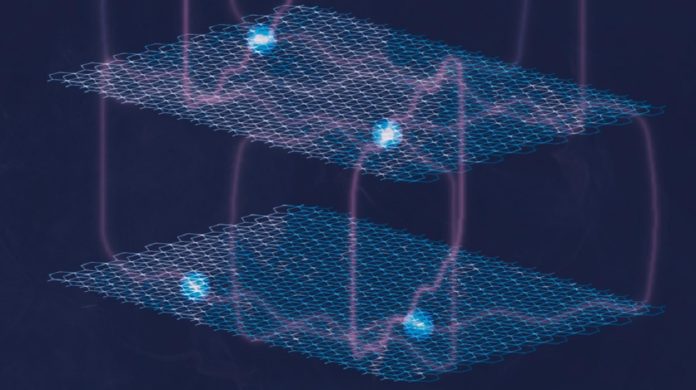While working with the resistivity of a type of delafossite – PdCoO2 – scientists at EPFL’s Laboratory of Quantum Materials found that the electrons in their sample didn’t behave entirely as expected.
When scientists applied the magnetic field, the electrons retained signatures of their wave-like nature, which could be observed much under moderately high-temperature conditions and showed up in generally large sizes. These astounding outcomes could demonstrate valuable, for instance, in the quest for quantum computing.
The importance of the discovery could be understood simply by imagining ourselves on the tiny scale of atoms. At that scale, we see that metals – even though we usually think of them as quite dense – actually consist of a great many empty spaces around the atoms.
When electrons move in these interstitial spaces, they have a twofold nature, behaving both as particles and as waves. Usually, their movements in a metal wire are captured well by their particle-like aspects, since their wave-like nature is far too faint and masked by various other interactions. Only under highly specific laboratory conditions, particularly at shallow temperatures, experiments by Richard Webb and coworkers had famously uncovered the wave character of electrons in metals.
PdCoO2 is used as a catalyst in chemistry. Scientists were surprised to observe a new type of oscillations that exhibited significant coherence lengths when the sample was subject to a magnetic field. This coherence is essential when trying to preserve quantum states, and the conditions under which it occurred should not have been possible under the basic principles of physics.
Philip Moll, who heads EPFL’s Laboratory of Quantum Materials, said, “This is truly surprising. It’s the very first time this quantum effect has been observed in such a large piece of metal. Twelve micrometers may seem small, but for the dimensions of an atom, it is gigantic. This is the length scale of biological life, such as algae and bacteria.”
In the future, scientists swill determines how this phenomenon is possible at this scale. But scientists already imagine a wealth of possibilities, particularly in the field of quantum computing. Stay tuned!
- Carsten Putzke et al., h/e oscillations in interlayer transport of delafossites. DOI: 10.1126/science.aay8413
